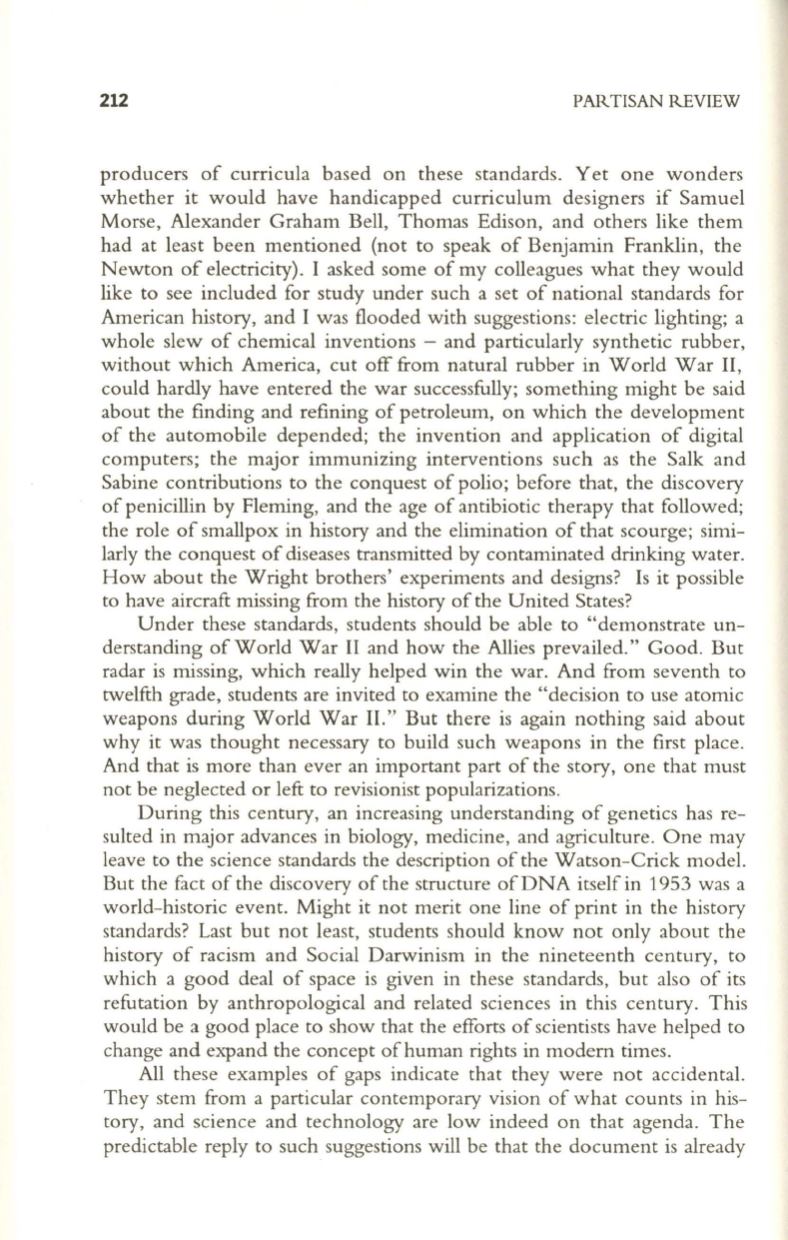
212
PARTISAN REVIEW
producers of curricula based on these standards. Yet one wonders
whether it would have handicapped curriculum designers if Samuel
Morse, Alexander Graham Bell, Thomas Edison, and others like them
had at least been mentioned (not to speak of Benjamin Franklin, the
Newton of electricity). I asked some of my colleagues what they would
like to see included for study under such a set of national standards for
American history, and I was flooded with suggestions: electric lighting; a
whole slew of chemical inventions - and particularly synthetic rubber,
without which America, cut off from natural rubber in World War
II,
could hardly have entered the war successfully; something might be said
about the finding and refining of petroleum, on which the development
of the automobile depended; the invention and application of digital
computers; the major immunizing interventions such as the Salk and
Sabine contributions to the conquest of polio; before that, the discovery
of penicillin by Fleming, and the age of antibiotic therapy that followed;
the role of smallpox in history and the elimination of that scourge; simi–
larly the conquest of diseases transmitted by contaminated drinking water.
How about the Wright brothers' experiments and designs? Is it possible
to have aircraft missing from the history of the United States?
Under these standards, students should be able to "demonstrate un–
derstanding of World War II and how the Allies prevailed." Good. But
radar is missing, which really helped win the war. And from seventh to
twelfth grade, students are invited to examine the "decision to use atomic
weapons during World War II." But there is again nothing said about
why it was thought necessary to build such weapons in the first place.
And that is more than ever an important part of the story, one that must
not be neglected or left to revisionist popularizations.
During this century, an increasing understanding of genetics has re–
sulted in major advances in biology, medicine, and agriculture. One may
leave to the science standards the description of the Watson-Crick model.
But the fact of the discovery of the structure of DNA itself in 1953 was a
world-historic event. Might it not merit one line of print in the history
standards? Last but not least, students should know not only about the
history of racism and Social Darwinism in the nineteenth century, to
which a good deal of space is given in these standards, but also of its
refutation by anthropological and related sciences in this century. This
would be a good place to show that the efforts of scientists have helped to
change and expand the concept of human rights in modern times.
All these examples of gaps indicate that they were not accidental.
They stem from a particular contemporary vision of what counts in his–
tory, and science and technology are low indeed on that agenda. The
predictable reply to such suggestions will be that the document is already


